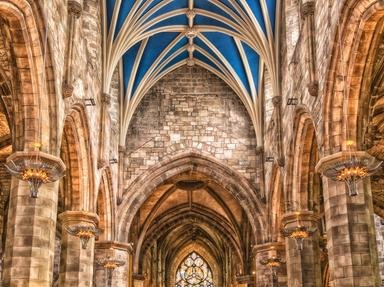Quiz Answer Key and Fun Facts
1. Deep in the jungle of a south-east Asian country with a tragic recent history, this imposing, remarkably well-preserved temple complex is the largest religious building in the world, and also appears in the middle of the country's flag.
2. This site in southwestern Europe has been an important religious destination since the Middle Ages. The magnificent Romanesque cathedral draws thousands of pilgrims and tourists from all over the world, and many still choose to reach it by walking, riding or bicycling.
3. This archaeological site in southeastern Europe was the foremost religious centre of the ancient Greek world. People came from far and wide to worship at the Temple of Apollo and consult its famous oracle.
4. The historic centre of one of the world's largest cities is home to Latin America's oldest and largest cathedral, built near the site of a temple of one of the continent's foremost pre-Columbian civilisations.
5. Situated at the southern edge of the Sahara Desert, this West African city was founded in the 5th century. In the 15th and 16th centuries it became an important centre for the propagation of Islam, as witnessed by its three great mosques and 16 mausoleums.
6. Besides being a revered pilgrimage site for Buddhists on account of its Temple of the Tooth Relic, this city was for centuries the capital of its island kingdom in the Indian Ocean.
7. The old Jewish district of a historic Eastern European city, the former capital of a country more often associated with the Catholic faith, hosts a unique complex of seven synagogues, the largest on the continent, representing all the main European architectural styles of the past millennium.
8. Built between the 12th and the 13th century, this stunning cathedral in western Europe is one of the finest examples of Gothic architecture, and its stained glass windows are nothing short of breathtaking.
9. Located in Central Asia, almost at the centre of the ancient Silk Road, this historic city has been a true crossroads of cultures for over 2,000 years. Its most famous landmark is a superb complex of three madrasas (Islamic schools), covered in decorated ceramic tiles.
10. Situated near the shores of the world's highest navigable lake, at an altitude of almost 4,000 metres above sea level, this monumental South American city was the spiritual and cultural centre of its culture, and was later regarded as the site where the sun god Viracocha had created the human race.
Source: Author
LadyNym
This quiz was reviewed by FunTrivia editor
trident before going online.
Any errors found in FunTrivia content are routinely corrected through our feedback system.


